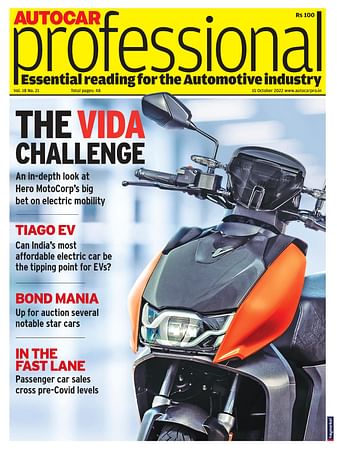Bringing EV tech from the moon to earth
Engineers from GM helped create a revolutionary electric motor drive system, suspension, mesh wire wheels and a unique drive controller adapted for lunar gloves.
Forty-five years after the first Lunar Rover trip, electric vehicle engineers continue to innovate. In July 1971, Apollo 15 astronauts explored the moon in the first electric-powered $38 million Lunar Rover, with some assistance from General Motors engineers.
The Rover was a textbook example of pushing the envelope of creativity. Working at light speed, GM, in cooperation with partner companies, developed, designed and tested the Lunar Rover. Engineers from GM helped create a revolutionary electric motor drive system, suspension, mesh wire wheels and a unique drive controller adapted for lunar gloves.
Project chief engineer Ferenc Pavlics and his team thought outside the box to solve challenges for both for astronauts and future EV customers. Almost 50 years after the project, Pavlics still remembers the innovation and commitment required to build an electric vehicle with unprecedented performance.
“When our team began engineering for the Lunar Rover, there were so many unknowns, including varied terrain, extreme temperatures and the effect of reduced gravity,” said Pavlics, now retired. “We pushed the boundaries of automotive technology and worked hand in hand with the astronauts on the vehicle’s design.”
Pavlics sees a connective thread between his work then and Chevrolet’s contemporary electric vehicles like the Bolt.
“The Bolt EV required a new architecture to upend the status quo on electric driving,” said Michael Lelli, vehicle chief engineer. “We drew on our deep electrification expertise to provide Chevrolet customers the first long-range, affordable electric car.”
The same innovative spirit helped engineer an electric vehicle like the Bolt. Except today’s EV drivers don’t have to wear space suits.
.
RELATED ARTICLES
Sept 2024 From R&D incentives to EV infrastructure: What auto components industry expects from Budget 2024
Sept 2024 From R&D incentives to EV infrastructure: What auto components industry expects from Budget 2024
US car majors hit the brakes on driverless cars
Ford Motor and Volkswagen to close self-driving startup Argo AI, due to lack of technology and clear regulations.
Autoliv and Geely to develop advanced safety tech for future vehicles
Scope of cooperation includes safety for high-level autonomous driving, intelligent steering wheel technology, a 360deg ...






 By Autocar Pro News Desk
By Autocar Pro News Desk
 23 Jul 2017
23 Jul 2017
 2574 Views
2574 Views









